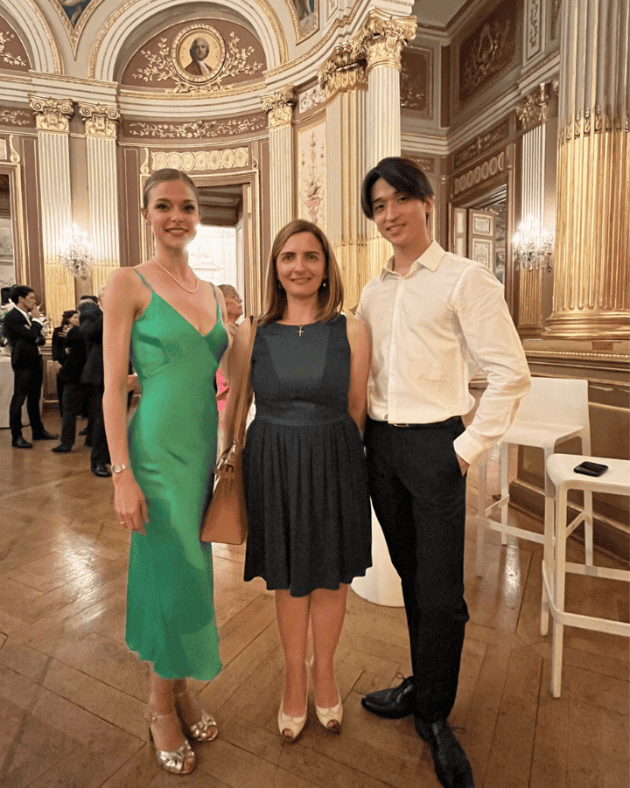In the time of Louis XIV, only male dancers performed ballet on stage. Female roles were even played by men, as women were not yet allowed to perform in public.
From the 18th century onwards, dance gradually became more feminine. In particular, with the advent of pointe techniques developed in the early 19th century. The Romantic era reinforced the graceful image of the ballet dancer. Men's roles were used to support the lead role written for women. The portés technique became a symbol of the male role in dance, which was seen as secondary.
However, men have continued to play an important role, particularly in spectacular jumps that require strength and precision.
Today, we're going to take a look at the male ballet stars who have left their mark on the history of classical ballet. First, we'll look at what it means to be a male ballet star.
A danseur étoile is a prestigious title in the corps du ballet (group of dancers in a dance company). This title designates who is the principal dancer. Star dancers are recognised for their technique, talent and ability to move audiences. They are guaranteed important roles in ballets, such as the lead roles in Swan Lake, Giselle, Don Quixote, etc.
Vaslav Fomitch Nijinsky was born in Ukraine on 12 March 1889 and died in London on 8 April 1950. A Russian dancer and choreographer of Polish origin, he entered the Imperial Dance Academy in St Petersburg at a very early age, where he was noticed for his leaps and his talent as a dancer. It was the impresario Serge de Diaghilev who made his name. Thrown into the milieu of the Russian haute bourgeoisie, the dancer became one of the greatest artists of his time.
Nijinsky is often considered to be the first male dancer to have achieved such renown and to be seen as a world ballet 'star'.
Vaslav Nijinsky is also known for his system of dance notation, which he created for his own use. With his unique androgynous style, the Russian star dancer integrated elements of theatrical performance with a more modern approach, influencing the future direction of dance.
Born in 1938, Rudolf Nureyev left his mark on the world of dance. Of Russian origin, he was truly passionate about dance. He loved to learn and danced all forms and styles of dance: modern, contemporary, baroque.
Nureyev left the Soviet Union in 1961 and danced with several prestigious companies before becoming director of the Paris Opera Ballet in 1983. He is best known for his legendary partnership with Margot Fonteyn. Their collaboration is now considered one of the most emblematic in the history of dance.
His revolutionary technique particularly highlighted the male role in ballet, which until then had often been overshadowed by female dancers. Nureyev redefined dance for men, bringing power, expressiveness and virtuosity to male roles.
Today, Rudolf Nureyev is regarded as a dance legend, and his legacy continues to inspire dancers and choreographers the world over.
Manuel Legris, a Parisian prima ballerina and choreographer born in 1964, was appointed prima ballerina at the Paris Opera by Rudolf Nureyev. He is famous for his interpretation of the great classical roles such as Swan Lake, Giselle, Don Quixote and Sleeping Beauty.
A talented and versatile dancer, Legris excelled in the contemporary repertoire, working with the greatest choreographers such as William Forsythe, Maurice Béjart, and Jiří Kylián. He is now known as one of the most outstanding dancers of his generation, dancing in France and abroad.
Kimin Kim is a young prodigy from South Korea, born on 28 October 1992. He has made a name for himself for his prowess and his ability to convey emotions on stage. He is the first Asian man to join the Mariinsky Ballet. He has danced with prestigious ballet companies such as the American Ballet Theatre. In addition, he won first prize at the Rome International Ballet Competition in 2008 and was awarded the Benois Prize for Dance in 2016.
Kimin Kim is a breathtaking dancer who stands out for his exceptional leaps and impressive mastery of pirouettes, combining speed and precision. He has collaborated with renowned choreographers such as the aforementioned Manuel Legris.
Riku Ota, from Iwate in Japan, started ballet after accompanying her older sister to dance classes. His passion for ballet grew with time. Inspired by the dancer Tetsuya Kumakawa, he decided at an early age to enter dance competitions. At the age of 15, he received a scholarship to the prestigious John Cranko Schule in Germany, where he forged a solid technique. After joining the Ballet de l'Opéra National du Rhin, he moved to the Ballet de l'Opéra de Bordeaux in 2019, where he flourished in a wide repertoire. His determination and talent earned him the title of Danseur Étoile in 2023.

Despite a difficult period marked by the pandemic and injuries, Riku Ota has never ceased to excel, becoming a key figure in the Bordeaux company alongside Mathilde Froustey.
Guillaume Diop is a French prima ballerina of Senegalese origin, born in Paris in 2000. He is known for his stage presence, power and sensitivity. He entered the Paris Opera dance school at a very early age, where he developed his technical and artistic skills. He was appointed danseur étoile at the age of 23, making him the first Métis danseur étoile of the Paris Opéra. He has walked the catwalk for France's leading haute couture brands and took part in the opening ceremony of the 2024 Olympic Games.
This young man is an inspirational figure in the dance world, representing diversity and talent in a traditional art form.
In conclusion, the history of men's ballet has been marked by such emblematic figures as Vaslav Nijinsky, Rudolf Nureyev, Manuel Legris, Kimin Kim and Guillaume Diop. These star dancers not only demonstrated exceptional technical and artistic mastery, but also helped to redefine and enhance the role of men in ballet.